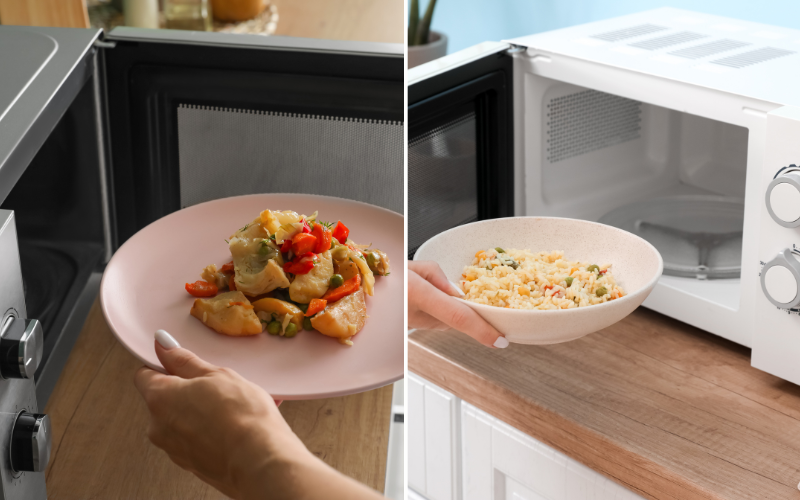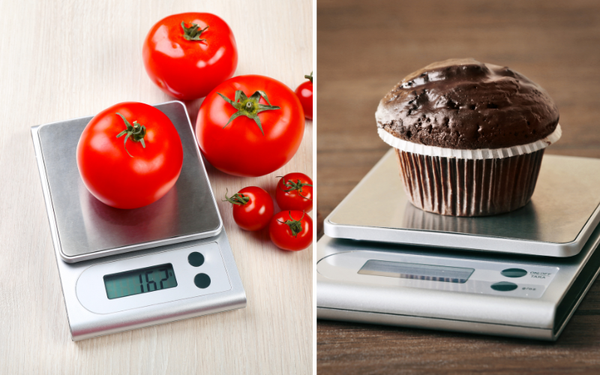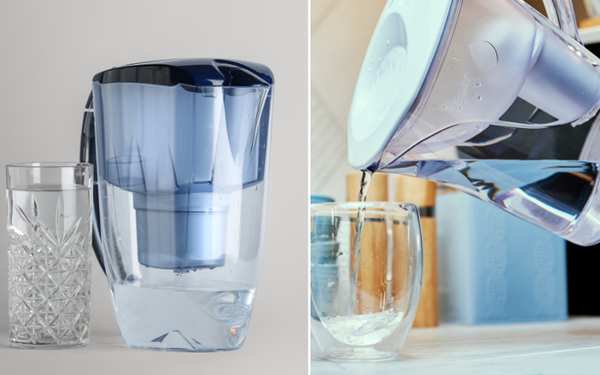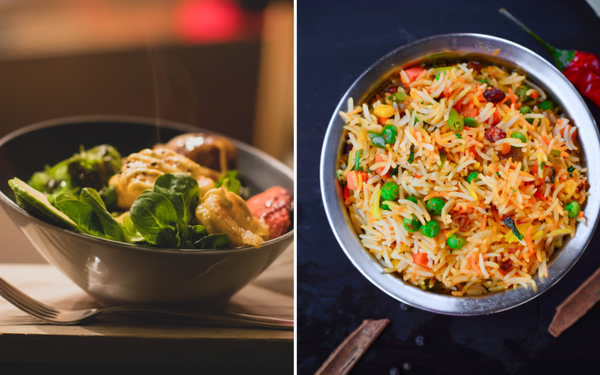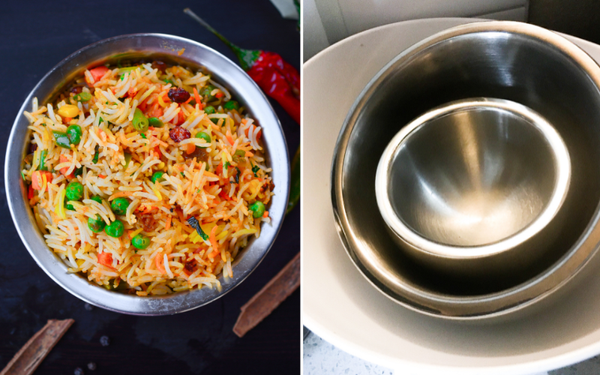Wondering, is it better to microwave food with a cover? Covering your food in the microwave can prevent splatters, ensure even heating, and retain moisture, making it a simple yet effective method for improving meal quality. This article will explore the various benefits and considerations of using a cover when microwaving food, so you can achieve perfectly reheated or cooked dishes every time.
Key Takeaways
- Covering food in the microwave ensures even heat distribution, keeps moisture in, and prevents splatters, contributing to tastier and safer meals.
- Uncovered microwaving can lead to uneven cooking and bacterial growth, posing a risk to health and food safety.
- For optimal results, use microwave-safe covers like ceramic plates, glass lids, or beeswax wraps, and avoid unsafe materials and overly tight covers to prevent chemical contamination and pressure buildup.
The Importance of Covering Food in the Microwave
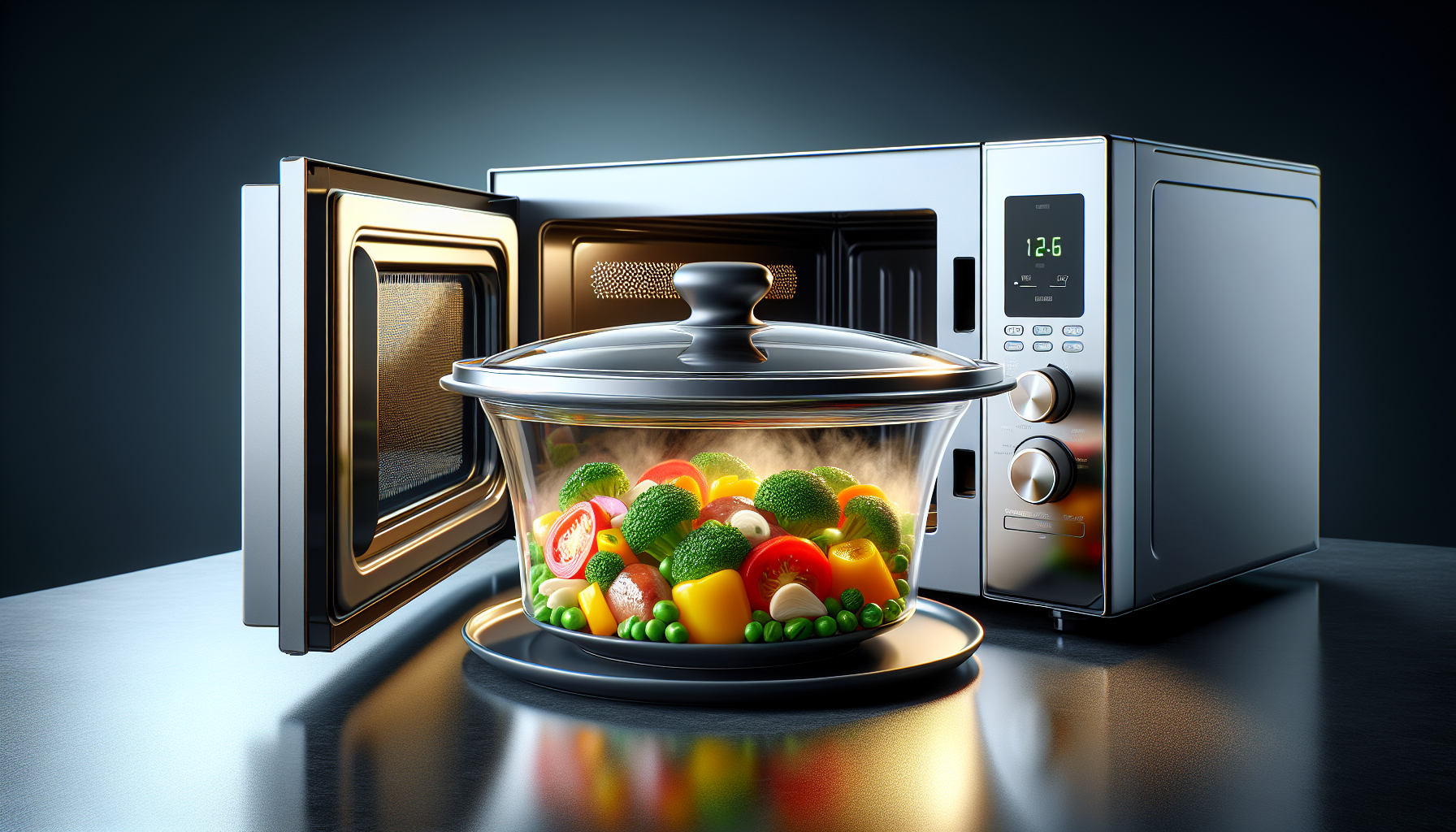
Imagine biting into a perfectly reheated slice of pizza, only to find a cold spot in the middle - a no-no in the world of microwave cooking. Covering food in the microwave isn’t just about keeping your oven clean; it’s the secret to evenly heated, succulent meals every time. Whether you’re reheating food or cooking fresh meals, a simple cover can make all the difference.
By trapping microwave energy, a cover ensures that your dish reheats evenly, with heat circulating around the food instead of escaping every time the microwave door opens. Plus, it’s not just about the heat – covering also helps retain that precious moisture in your food, so it doesn’t turn into a desert-like dish. And let’s not forget the splatter prevention – no one enjoys cleaning their microwave ovens after every use, right?
Even Heating
Even heating is the Holy Grail of microwaving food. By lightly covering your dish, you create a moist heat environment – a mini sauna for your heating food that helps avoid those dreaded overcooked edges and undercooked centers. And if you’re a fan of leftovers, you’ll know there’s nothing worse than a meal that’s hot on the outside but frozen in the middle.
Retaining Moisture
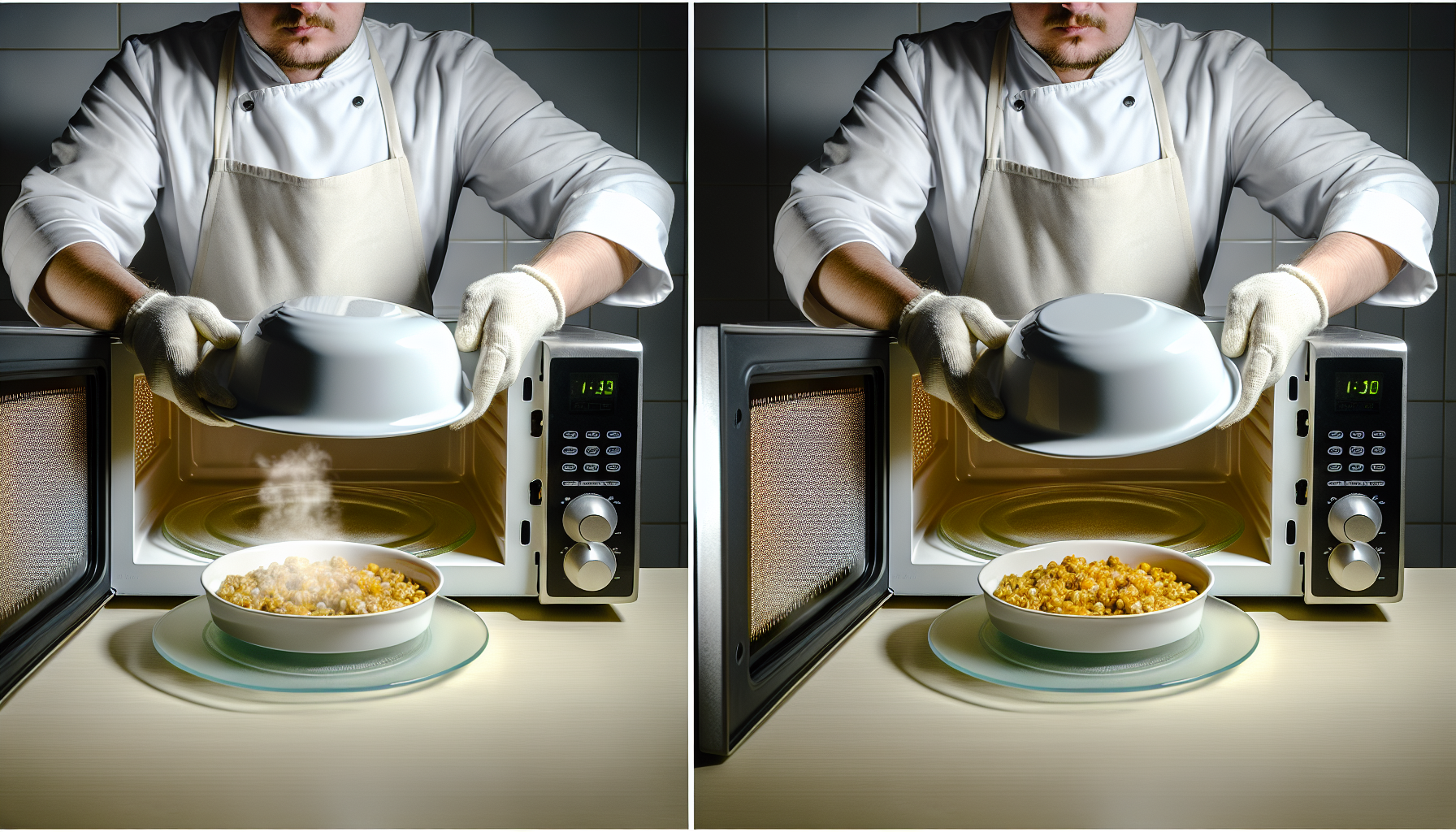
Have you ever wondered why some microwaved foods taste better than others? The answer often lies in moisture retention. Covering food in the microwave with plastic wrap or paper towels, like a damp paper towel, keeps that moisture in, giving you juicier chicken and fluffier rice.
It’s like a mini steamer, working its magic on your meal.
Preventing Splatters
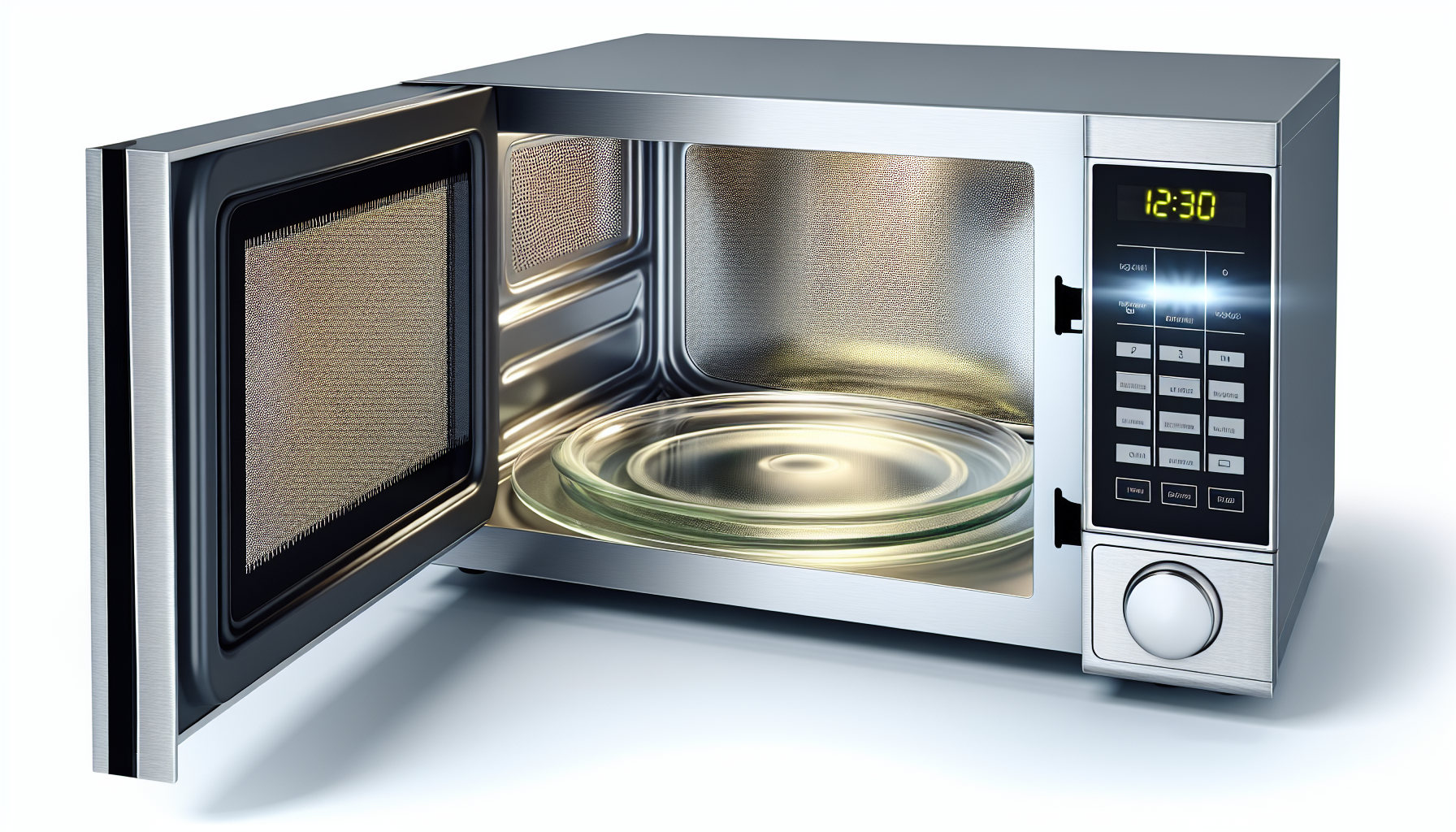
We’ve all been there – opening the microwave door to a scene of carnage. Splattered sauce and bits of food clinging to every surface. It’s a cleanup nightmare. But with a cover, you can prevent splatters, making sure your microwave stays pristine and ready for its next culinary adventure. Plus, it’s safer, as those eruptions can be hot and hazardous.
Risks Associated with Uncovered Microwaving
But what if you throw caution to the wind and microwave uncovered? Well, it’s a bit like sunbathing without sunscreen – risky business. Uncovered microwaving can lead to uneven cooking, which is not just a matter of taste, but also of safety. Unevenly heated food can be a breeding ground for bacteria, and no one wants to play roulette with their health.
Covering food properly ensures that the microwave energy works its magic evenly, killing bacteria and giving you peace of mind. Plus, it’s like having an insurance policy against those splatters – because cleaning baked-on food from your microwave is no one’s idea of a good time.
Uneven Cooking
Think of your microwave oven as a stage, and your food as the star performer. Just as a singer moves around the stage to engage the entire audience, food needs to be stirred and turned to ensure every part gets its moment in the spotlight, cooking the food evenly. Otherwise, you’ll end up with a performance – or in this case, a meal – that’s only half-baked.
Bacterial Growth
The science behind microwaving is fascinating – it’s all about vibrating molecules creating heat. But when food is microwaved uncovered, those vibrations might not reach every nook and cranny, leaving cold spots where bacteria can thrive. It’s like a microscopic game of hide and seek, and the bacteria are winning.
By covering your food, you’re ensuring that every molecule gets in on the action, and those pesky bacteria don’t stand a chance with food uncovered.
Choosing the Right Microwave Cover
Now, not all covers are created equal. When it comes to choosing the right microwave cover, think of it as picking the best armor for your food. The right cover will have proper ventilation to let steam escape, preventing pressure buildup and ensuring even cooking. Some covers even double as colanders, making them multi-tasking heroes in your kitchen.
But beware, the wrong cover – like using the plastic lid that comes with your takeout – can do more harm than good. So let’s dive into the world of microwave-safe materials and find out which heroes you should enlist to protect your culinary creations.
Microwave-Safe Materials
When it comes to microwave-safe materials, think of ceramics, glass, and certain plastics that come with the all-clear label for microwave use. These materials are the trusted sidekicks of your microwave, ensuring that your food is not only cooked evenly but also free from any unwanted chemical guests.
And let’s not forget silicone, the flexible friend that can withstand high heat and come out looking as good as new.
Ventilation Features
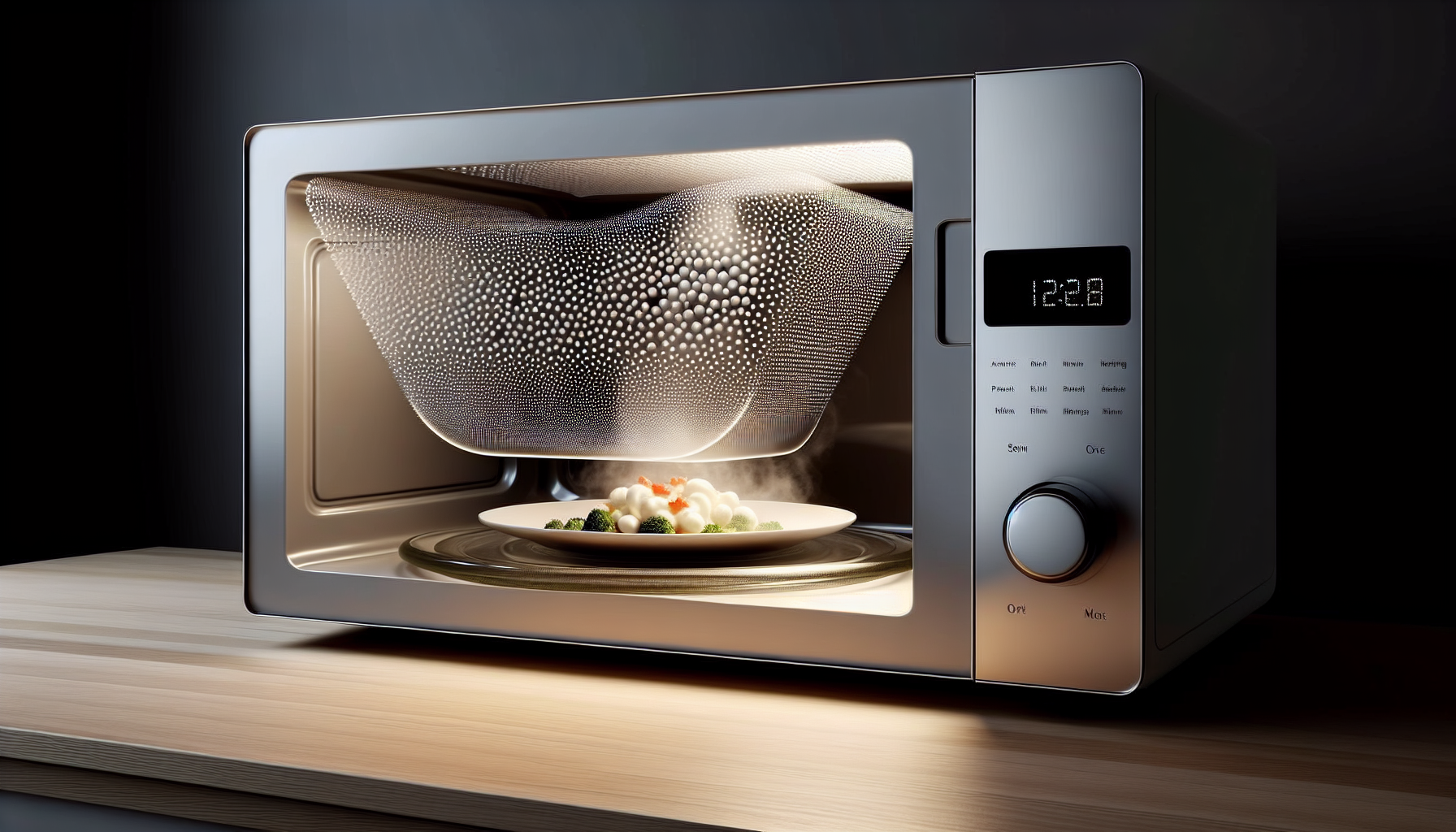
Ventilation is not just for your home; it’s also crucial for your microwave covers. A good cover needs to let off some steam – literally. This prevents your microwave from turning into a pressure cooker and helps distribute heat evenly.
It’s all about balance – keeping enough moisture to cook your food while letting excess steam escape to avoid a soggy disaster.
Alternatives to Traditional Microwave Covers
So you’re ready to break up with plastic wrap and aluminum foil? Great! It’s time to meet the new, eco-friendly players in town. These alternatives not only do the job well but also bring a touch of sustainability to your microwave cooking. Embrace the change with ceramic plates, glass lids, and beeswax wraps – your food (and the planet) will thank you.
But it’s not just about being eco-conscious; these alternatives also offer practical benefits like durability and safety. Let’s take a closer look at each of these game-changing options and how they can transform your microwaving routine.
Ceramic Plates
Ceramic plates are the unsung heroes of the microwave world. Here’s why:
- They are cost-effective
- They excel at trapping moisture, ensuring your food cooks evenly and retains its natural flavor
- They are safe, durable, and free from the risk of leaching chemicals into your food
A triple threat in the kitchen!
Glass Lids and Plates
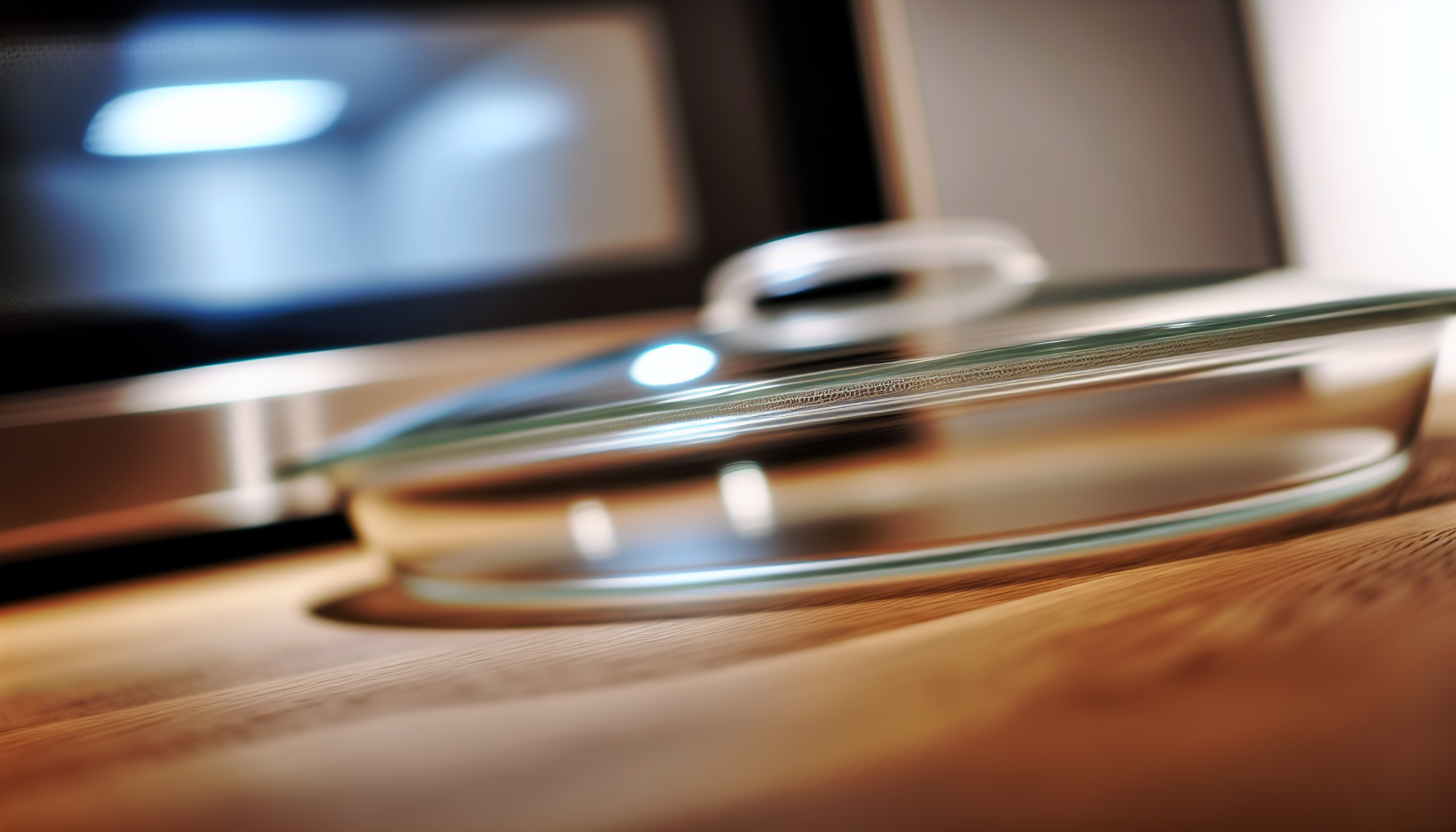
Glass lids and plates, especially those made from borosilicate glass, are like the heat-resistant superman of microwave covers. They can take the heat (literally) without batting an eye, going from fridge to microwave without cracking under pressure.
Safety and strength? That’s a winning combo in our book.
Beeswax Wraps
Enter beeswax wraps: the eco-friendly, reusable warriors fighting against single-use plastic covers and plastic containers. Made from organic cotton and beeswax, these wraps are not just kind to the environment but also to your food, providing a safe and natural way to cover dishes in the microwave.
Plus, they’re washable, making clean-up a breeze.
Avoiding Common Microwave Cover Mistakes
Even the best of us can slip up in the kitchen, and when it comes to microwave covers, there are a couple of traps to watch out for. Using the wrong materials or too tight a cover can lead to a culinary calamity, from chemical contamination to steam-related explosions. Let’s ensure that your microwaving doesn’t end in a kitchen disaster.
By understanding the pitfalls and learning how to sidestep them, you can ensure your microwave cooking is not only delicious but also safe. So let’s discuss some common mistakes and how to avoid them.
Unsafe Materials
Metals in the microwave? Big no-no. They’re like kryptonite to your microwave’s superpowers, causing sparks and even fires. And let’s talk about plastics: while they might seem convenient, some can release harmful chemicals into your food when heated. So stick to the good stuff – microwave-safe materials that won’t have you reaching for the fire extinguisher.
Overly Tight Covers
A cover that’s too tight is like a lid on a boiling pot – it’s a pressure and moisture disaster waiting to happen. You want to avoid turning your microwave into a steam engine or your food into a soggy mess.
So go for covers that fit just right, allowing steam to escape and your cover food to cook to perfection.
Tips for Microwaving Different Foods
Your microwave can be a culinary chameleon, adept at cooking a variety of foods to perfection. But just like any masterful technique, there are little tricks that can make a world of difference. From veggies to bacon, each food has its own set of rules to ensure it comes out just right.
Whether you’re looking to master the quick lunchtime soup or a breakfast of champions with perfectly microwaved eggs, these tips will steer you in the right direction. So let’s dive into the specific how-tos for different types of food.
Soups and Liquid-Based Foods
Soups are the ultimate comfort food, but microwaving them can be tricky. To avoid a bland or watery disaster, remember to:
- Adjust the liquid, salt, and seasoning
- Use high power for veggie soups
- Simmer on medium for tough meats
- Use a gentle warmth for creamy concoctions
It’s all about finesse when it comes to power settings.
Egg Dishes
Eggs in the microwave can go from raw to rubber if you’re not careful. Using parchment paper or a microwave-safe lid can help distribute the heat and prevent the eggs from turning into a science experiment gone wrong.
And remember, a little stir midway through can save your breakfast from becoming a chewy mess.
Summary
Covering food in the microwave is a simple step that can take your meals from meh to magnificent. From ensuring even heating and moisture retention to preventing splatters and bacterial growth, a good cover is like a magic wand for your microwave. And with eco-friendly alternatives like ceramic plates, glass lids, and beeswax wraps, you can cook with a clear conscience.
So the next time you’re about to hit ‘start’ on that microwave, remember the power of a cover. It’s a small act that can make a big difference, giving you tastier, safer, and cleaner microwave cooking. Now go forth and microwave like a pro!
Frequently Asked Questions
Is it better to microwave food with lid on or off?
It is better to microwave food with the lid on, especially if the food contains liquid or fat. This helps the food cook faster and more consistently. No explosions in your microwave, please!
Does covering food in microwave reduce radiation?
No, covering food in the microwave doesn't reduce radiation. It simply helps trap heat and steam to cook the food evenly.
Can I use any plastic container as a microwave cover?
No, not all plastic containers are safe for the microwave. Look for microwave-safe containers, or use alternatives like ceramic plates, glass lids, or silicone covers to avoid any potential health risks.
How do I prevent my food from drying out in the microwave?
To prevent your food from drying out in the microwave, cover it with a microwave-safe lid or a damp paper towel to trap moisture and create a steaming effect. This will help keep your food moist and delicious.
Is it safe to use aluminum foil in the microwave?
No, it's not safe to use aluminum foil in the microwave as it can cause sparks and is a fire hazard. Stick to using microwave-safe covers like silicone lids, glass plates, or parchment paper instead.
You Might Also Like...
